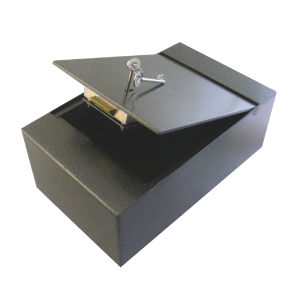What Is A Safe?
Every home or business is open to security threats, and while we can have security features on doors and windows, these cannot always guarantee possessions against theft, fire or water damage. And even if we have good security measures in the home or workplace, when we open our doors to visitors, particularly in a work environment, we have to take extra measures to ensure valuable possessions are secure. So this is where we need a safe.
A basic description of a safe
So a safe is a strong and secure box that is lockable, for the secure storage of valuable items and to protect them from the threat of theft and environmental damage. There are many different styles and sizes of safe, but typically they will have a unique lockable mechanism, access to which will be restricted to nominated and authorised personnel.
What items would you keep in a safe?
The items you would typically keep in a safe will differ depending on if the safe is being used in a domestic or commercial location, but in all cases the user can define what is or isn’t stored in a safe. In a domestic setting we ideally don’t want anything to be open to theft, but of course we can’t store everything in a safe. To some extent, we can handle the theft of some items, but there are others that we definitely want to keep secure from theft because they would cause personal distress, may lead to fraud or identity theft, or could lead to legal problems. So we might decide to store the following items in a safe:
- Small and personally valuable items such as photos or family heirlooms
- Expensive jewellery (necklaces, watches, rings, bracelets etc)
- Large sums of cash
- Important personal items such as passports, birth certificates, driving licence
- Important legal documentation such as a copy of a will or a lasting power of attorney
In a commercial setting a safe is used for slightly different purposes. In this case you are protecting the valuable property of the business, and this can include financial property, personal employee data, but also intellectual property, ie. information that protects the unique status of the business in terms of its products or services, and which you would not wish to fall into the hands of a competitor business, or to become common knowledge in the marketplace. So a business would look to protect:
- Petty cash
- Any small valuable items
- Data or back-up data stored on hard drives or USB sticks
- Important signed documentation/contracts
- Product specifications, recipes or formulas – either hard copies or digital copies
What are the typical features of a safe?
The most important feature of a safe is that it is strong and secure, so it will have engineering and technical features which ensure it is tamper-proof and fire-proof. So typically, a safe will have:
- Strong, thick steel walls which can’t be drilled through or accessed with gas cutting tools
- The walls will also be fireproof and waterproof
- A hinged door that is lockable via either a key or a digital number combination. The lock will be a design that is very hard to pick. Also, the door and hinges will be designed so that a thief can’t just use a crowbar to prise the door open. The lock itself should have multiple locking bolts for added strength
- With a digital number combination lock, the user will have the option to choose their own combination
- The safe should have a mechanism in its base or back wall to enable the user to anchor it to a wall or floor
Typically a safe will be much heavier than its size suggests it should be. This is down to the type of steel used to construct the walls, and while this adds to the strength of the walls, it also means the safe is harder to pick up as a whole unit and transport out of a home or workplace, at least where the safe is not anchored to the floor or wall.
Another important feature of a safe is size. There are many different sizes of safe available, some are small for petty cash, some are narrow for storing a laptop or hard drive, and some are deep and tall with a shelf for multiple items.
Where would you install a safe?
For obvious reasons a safe should be stored out of sight, so that it cannot easily be found. Many people store a safe under a floor covering, or in a wardrobe or in a wall behind a picture. In a domestic or commercial setting a safe can be stored underneath a desk, or if it is small, in a lockable drawer.
How does a safe guarantee security?
Depending on how well-built a safe is, it can only offer a certain level of security. So most safes carry a ‘rating’ to denote a specific level of security. Also, a good safe will be constructed to an international standard, which means it has been independently tested and certified to guarantee a certain level of security.